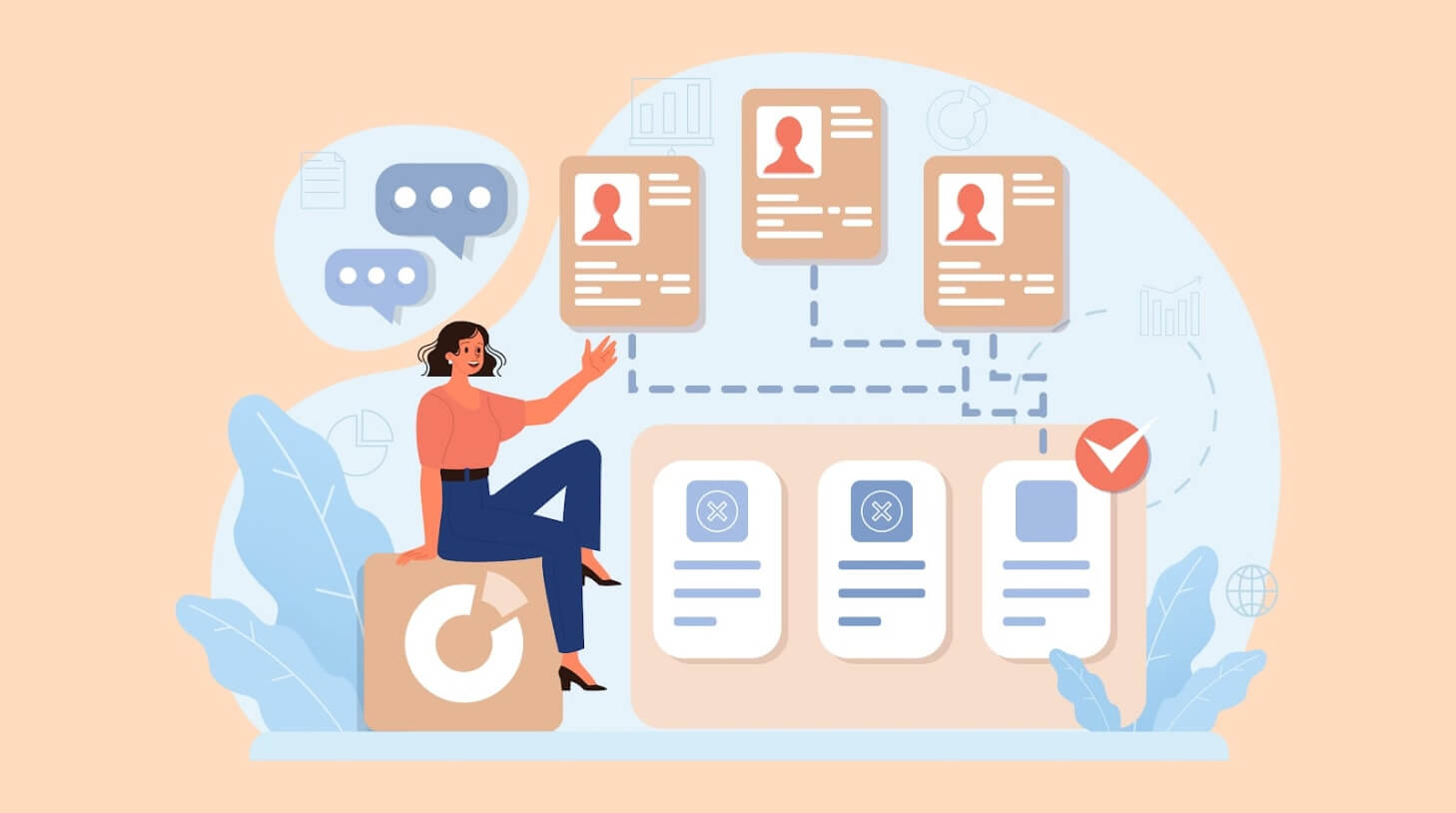Remote work trailblazer: Insights from SmartBug Media’s founder
Ryan Malone had a bold idea in the late 2000s when he launched his new chapter as CEO of SmartBug Media: What if we were all to work remotely? Maybe not such a bold idea now, especially during these times, but back then, there was plenty of skepticism.

“Everyone thought we were silly,” Ryan recalls. ”I remember people, partners of ours and larger companies who are now super-remote evangelists telling me that it would never work at a company past 10 people.”
As Ryan’s company grew, he found people’s hesitation about remote work only grew with the size of the company – effectively, the larger you are, the more you must have an office for everyone to work in.
But Ryan has shushed those naysayers. SmartBug, a marketing agency that’s “headquartered” in California with its entire 80-strong workforce all working remotely, is now certified as a Great Place to Work. It’s also been named to the Inc. 5000 List of Fastest Growing Companies for three straight years, as well as the AdWeek 100 Fastest Growing Agencies List.
With the world rapidly – and for many, uncomfortably – moving towards remote work as a permanent solution, it’s good to learn from the experts who’ve already done it and have been doing it for a long time. So we got in touch with Ryan to find out the method behind the madness.
Contents
Back in the beginning
As it happens, Ryan’s life as a remote CEO was personally motivated:
“When I was 17, my dad passed away. He worked so hard. He was in aerospace and in quality assurance, so he traveled a lot. But he was always present at 95% of the things that I did. He coached our sports teams and all of these things.”
Ryan wanted to be that kind of a father for his kids. “I didn’t want to be the dad who never saw his kids grow up because I’m always at the office.”
He also had large aspirations being the CEO of SmartBug. He wanted to be able to invest a fair amount of time and energy into that but without taking it away from his family or vice versa.
“If you’re the CEO of a company and you parachute in once a month to make a decision about which you have no information, you have no camaraderie with your team, you’ve never gone to war with any of them – like, nobody wants to work for that person. That’s not a leader in my opinion.”
So – being caught in that career-vs-family dilemma, Ryan opted to choose both.
“At the time, the only way that I could be there for my kids and be there for my company was to be remote – it was the only solution to our problem.”
It’s a two-way street
Ryan wanted to extend that setup to his employees. He believes that if you show employees that you value what they do outside of work by granting them the power to set a work and life cadence that suits them best, the payoff is huge.
Ryan figured he could make that happen with an all-remote model at his company – this way, he could get better talent faster, and as a result, people at his company would work in an agile way in a challenging environment with very smart colleagues.
“At the same time, [you] give them the flexibility and freedom to have a great career and go create memories in their life, which at the end of the day is what matters to us, and that we could do both.”
A work-life integration
But according to Ryan, that doesn’t mean work-life balance. It’s actually work-life integration.
“I think work-life balance assumes that you turn off things at 5 o’clock and there’s some kind of schedule in which work isn’t a big part of your life. Work-life integration is more that you can do both. Let’s assume I want to run a triathlon, and my triathlon team trains at 3 o’clock on Tuesday. In a work-life balance environment when I’m 9 to 5, I wouldn’t be able to participate in that because the expectation is that the company wants you there til 5. Those are business hours.
“In work-life integration, the employee makes a decision to say, ‘You know what, I’m gonna schedule in 3 to 6 p.m. every Tuesday for my training’. In fact, we encourage people to schedule the things that matter in their life first. I pick up my kids every day from the bus at 3, I train for the triathlon, whatever, and then make life decisions after that, knowing that I can do the non-customer facing things outside of business hours. It’s an empowering decision for people.
“That’s integrating your work in your life in such a way that you can win both.”
This requires a special kind of worker who can thrive in this sort of environment.
“We feel like people who are kind of sharp and driven […] we’ll take advantage of that and design their work schedule in such a way that they do the best work at the right time and that they have time for the things that matter at the right time, and there’s so much time in a week that you should be able to do both.”
The realities of the 9-to-5
Although the death of the 9-to-5 schedule is often proclaimed by leading publications including Financial Review and Inc., with arguments to shorten it to as little as five hours a day, the 9-to-5 grind is still a common reality. Since this work tradition dates way back to the days of Ford and his automobile plants, there’s bound to be skepticism.
That’s evident in the clear gap between those who want greater flexibility in many different forms in their work schedules (a staggering 96% of those surveyed) and those who actually have it (less than half that – just 47%). So, what does Ryan say to those companies that insist on staying with the standard?
That kind of pushback, he says, usually comes from someone who’s either unfamiliar or new to remote work. And that applies not only to employers, but employees too:
“In fact, there was an example of someone here who when you talk to them, they’re like, ‘I’m really stressed out with this remote stuff’, and I ask them why. [Their response is]; ‘Well, I just feel like I need to be at my desk all the time in case a client calls’.”
Ryan says he would ask them what it was like when they worked in-house at an office – the response would be that they would leave a voicemail message. If that call was at 4:30, i.e. later in the day and you weren’t able to return that call, then they’d just call the next day. And so on.
Ryan’s point: “What’s the difference so as long as you’re available for your clients and you’re available for your team? Why does the rest of it matter?”
And not being able to see someone physically at their desk is a sign of distrust, he says. “It’s not really just trust – it’s more like an unfounded fear that something’s not getting done.”
Face the fears, and then overcome them
We’re now in an environment that has really pushed many companies to a fully remote workplace. But that doesn’t mean that when we return to “normal” office life, we’ll also all move back into the office. A recent PricewaterhouseCoopers survey has found that 49% of companies are prepared to go fully remote with roles that can accommodate that.
That makes it even more important to hire great people who can thrive in that new remote environment, says Ryan. You don’t have to worry that they’ll do their job, because you’ll know pretty quickly if they aren’t, by way of feedback from clients or colleagues.
He emphasizes that when you make a hire, you’re sending a message of trust that your new employee will be a valuable asset to your team – so it doesn’t make sense if you want to be able to see them at their desk or keep them to a fixed schedule after they’ve been hired.
At the root of it is an underlying fear of change for many managers and companies, and this current crisis is a catalyst that makes them face that fear. Ryan explains:
“It forces them to realize that what people can do is just as good […] and they’re just as passionate about their work – they just happen to be on a video or they happen to be in their pajamas or their kid might be running in the background, but you [still] hired a passionate person.”
ID your stars from the start
Not everyone’s cut out for remote work, obviously – a Gallup poll finds that 41% of U.S. workers will want to return to the office once COVID-19 restrictions are lifted. But that means 59% do want to work remotely as much as they’re permitted to do so by their employer.
Of that 59%, however, there will be some who just don’t operate that well in a remote fashion. When you’re hiring for a remote position, you’ll want to identify the ones who can indeed shine in that environment. That means you’ll need to adapt the way you assess candidates.
But before doing that, Ryan stresses, you can’t let go of the normal job interview process. Out of all the hires he’s made in the history of his company, he’s only met two in person before hiring them. That’s two, out of an 80-strong employee base. The rest were via video – and previously, phone calls, which he called a huge leap of faith.
But that doesn’t mean the hire is made entirely on a hunch. There are strategies you can follow outside of the normal hiring process with the standard interview questions. Otherwise, you may make some bad choices:
“A candidate could put on their game face and say they love remote, and be this dynamic person, and talk to me about autonomy, and how they plan their schedule, but at the end of the day, if they do it for two weeks, they might be, like, ‘I need some friends’.”
How to screen for remote-first workers
How do you recognize those red flags in a candidate before you’ve hired them? First, Ryan looks to where the candidate’s social energy comes from. For instance, if you find that a candidate likes going to work and goes to lunch and happy hour with the same people regularly, then remote work may be viewed as that being taken away from them.
That’s problematic, Ryan says. There are questions you can ask around that – for instance, ask a candidate: “When’s the best time for you to work?” Ryan says if the answer is that they love coming to work early in the morning or staying late, or shutting their door and having no meetings, because they can really get work done, then you know you’ve got someone who would be a good fit for remote.
”[You know] they’ll appreciate it. They gain something. […] It’s like ‘I lose something’ versus ‘I gain a freedom’. We really try to find the people that aren’t going to lose something when they go remote, but are looking for remote as a way to get rid of all the distraction.”
The second thing Ryan looks for is resiliency – the ability to adapt and pivot quickly in a less-structured environment. You don’t have those normal outlets where you can just go down the hall and vent in someone’s office after every minor hiccup. While there are still avenues through which you can help each other through rough patches – remote doesn’t mean isolated, after all – being resilient is still a powerful skill in a remote environment.
“So, we have to find people that have handled some adversity, and our resilient people can understand [that] maybe a client emergency comes up that you need to move stuff around,” says Ryan.
“That resiliency of understanding that, ‘Hey, I’ve got a certain amount of time during the day. My plan is X, but it may be that my plan is Y by noon because something more important came up, and I’m OK with that. I made that bargain in my head that I’m exchanging this for that, and it’s no big deal.”
Someone who’s able to do that, operating in unpredictable and less-structured environments, can really step up at a remote-first company like SmartBug.
Go deeper into the background
Ryan suggests taking a good part of the interview to talk to the candidate to assess their resiliency, even asking outright if they think they’re resilient and to share some examples of their being so. Rather than asking, “Give me an example of when you had a challenging project and what you did about it”, which Ryan thinks isn’t deep enough, he suggests that you open it up and explore the candidate’s background and experiences in a more open-ended way.
“It could be that you worked at a company where you were under-resourced constantly and you had to be scrappy, it could be that you had some situation that required you in your personal life to do something outstanding.”
Ryan says that part of the interview can take up 20 minutes or more because it’s worth it.
“I think that if you fish around for adversity and resiliency and stuff, you find people who have mettle, and mettle, I think, goes a long way in a remote workforce.”
The benefits of remote work
There are actually benefits to remote work that aren’t enjoyed in a traditional office environment, Ryan says – especially as it pertains to office culture and politics.
“In any company, there is sometimes animosity between one employee and another for whatever reason. In a remote company you never see that. You know, one person that’s always in the boss’ office at 3 o’clock and you see them through the window and they’re laughing and having a great time, and everyone’s wondering what’s going on. You just don’t have all that at a remote company.”
Remote work also better avoids other problems that can arise in a normal office environment, including clashing political views, harassment, discrimination, and other potential toxicities in the workplace.
But it’s not just about eliminating the potential negatives – Ryan finds a fully remote working culture opens up some new opportunities to foster a much more positive environment.
“There are some things that from an HR perspective you don’t really have to focus on. You can just focus on some of the positivity of culture if you find the right people.”
Teams get stronger, too, he adds.
“People [try] to help each other, and people [create] tribes of different interests. Those are really strong because that’s what keeps the remote team together.”
Deeper connections in physical separation
There’s a certain irony in finding deeper connections with people you’ve never – or rarely – met in real life. But that’s what’s happening at SmartBug.
“We hear it frequently when people come [to SmartBug] from in-house that they have tighter relationships here than they had when they were in-house. I think it’s because you have a lot of people who want to make connections with people, and they’re able to find their groups.”
Ryan says that’s because departments don’t tend to interact solely with each other in a relatively larger company of 100 or more employees. “They all have their little fiefdom.”
But those departmental separations are erased at SmartBug, and the company proactively ensures that.
“If I’m at a remote company, the common intersection between the two is that we all like reality TV or we’re all coffee aficionados or we’re all basketball fans. And so when we do onboarding, we have everyone do a get-to-know-you call which is just a 20-minute call, like, the rule is you can’t talk about work. And they do it with every employee.
“The purpose of that thing is to let people find their tribes and the other people that are interested and have commonalities, so that when they […] get into our Zoom, they have their groups that they are part of. Now they have multiple tribes that have the same interest, and the commonality is that interest.”
Teamwork makes the dream work
Unlike in the old days, we as a society are well-equipped to take much of our company remote – or even all of it. Ryan Malone freely admits that it’s still a challenge and that SmartBug Media is still trying to perfect their practice. So far, with a clear emphasis on recruiting strong performers who are drawn to this way of work, and having an effective vetting process in place to find these performers, it seems to be working.
Now, with the push to move to remote work as a result of the COVID-19 crisis and a mounting workforce that values flexibility in schedule, Ryan Malone and SmartBug Media don’t just have a head start – they’re already there.




